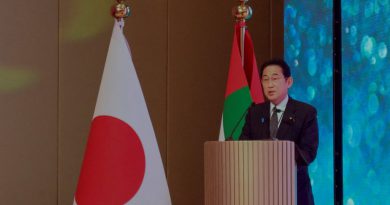Soyuz Spacecraft Blasts Off for International Space Station With Russian and American Crew
Moscow – A Soyuz MS-28 spacecraft successfully launched toward the International Space Station on Thursday, carrying two Russian cosmonauts and one NASA astronaut on a mission aimed at continuing long-term scientific research and maintaining essential operations aboard the orbiting laboratory, according to the official launch broadcast from Kazakhstan’s Baikonur Cosmodrome.
The liftoff marked another step in international cooperation in space at a time when geopolitical tensions on Earth remain high, underscoring how the ISS continues to serve as one of the few remaining bridges between major global powers.
The Soyuz 2.1a rocket powered upward through clear skies as it lifted off at 12:28 p.m. Moscow time, beginning its journey with a controlled ascent designed to place the spacecraft on a precise trajectory toward low Earth orbit.
Launch operations were carried out without incident, and mission controllers confirmed that the spacecraft separated as planned, deployed its solar panels and entered its initial planned orientation for flight. The launch drew attention not only for its technical execution but also for the multinational makeup of the crew.
On board the spacecraft is Russian commander Sergei Kud-Sverchkov, a veteran making his second trip to space after previously serving on the ISS for a long-duration mission.
He is joined by fellow Russian cosmonaut Sergei Mikayev, who is undertaking his first spaceflight after years of preparation and training for his debut expedition.
Completing the trio is NASA astronaut Christopher Williams, who is also embarking on his first mission to space, marking a significant milestone in his career and contributing to the ongoing U.S. presence aboard the station.
Following liftoff, the spacecraft began its series of orbit adjustments as planned, initiating a two-orbit rendezvous trajectory designed to bring it into alignment with the ISS Rassvet module.
Mission planners indicated that the automated docking procedure is expected to take place at 12:38 p.m. GMT, several hours after launch, allowing the spacecraft to gradually synchronize its speed and altitude with that of the orbiting station.
The docking sequence, which relies on a combination of Russian navigation systems and onboard computers, has been refined over decades of Soyuz operations.
Once the spacecraft completes its approach, the crew will perform a series of system checks before opening the hatch and entering the space station, where they will be greeted by the current ISS residents.
Their arrival expands the station’s crew and allows for the continuation of numerous scientific experiments, technical demonstrations and operational tasks that support long-term human presence in space.
Teams on the ground emphasized that the station’s mission schedule remains full, with a broad range of research in fields such as microgravity biology, human physiology, materials science and Earth observation.
During their planned eight-month stay, the crew members will rotate through a demanding schedule of scientific work, equipment maintenance, international collaborative projects and routine duties required to keep the ISS functioning as a stable microgravity environment.
They will also participate in regular communications with mission control centers in both Russia and the United States, ensuring that operations remain coordinated despite political tensions between the two countries.
The ISS, built and maintained by multiple nations, continues to represent one of the most complex engineering partnerships in history.
Their mission is expected to conclude with a return to Earth in late July 2026, in keeping with standard rotation cycles for long-duration ISS expeditions.
Upon returning home, the crew will undergo medical evaluations and recovery procedures designed to help their bodies readjust to gravity after their extended stay in space.
The mission serves as another reminder that despite challenges in international relations, cooperation in space exploration remains a vital area of shared interest and scientific progress.



